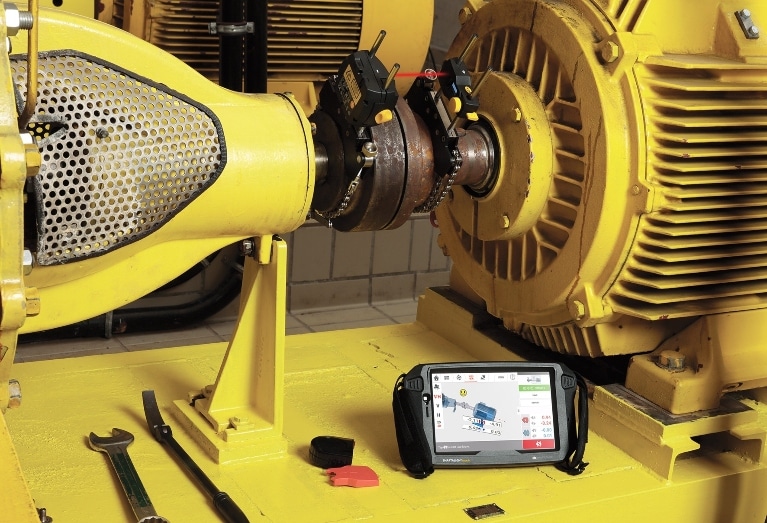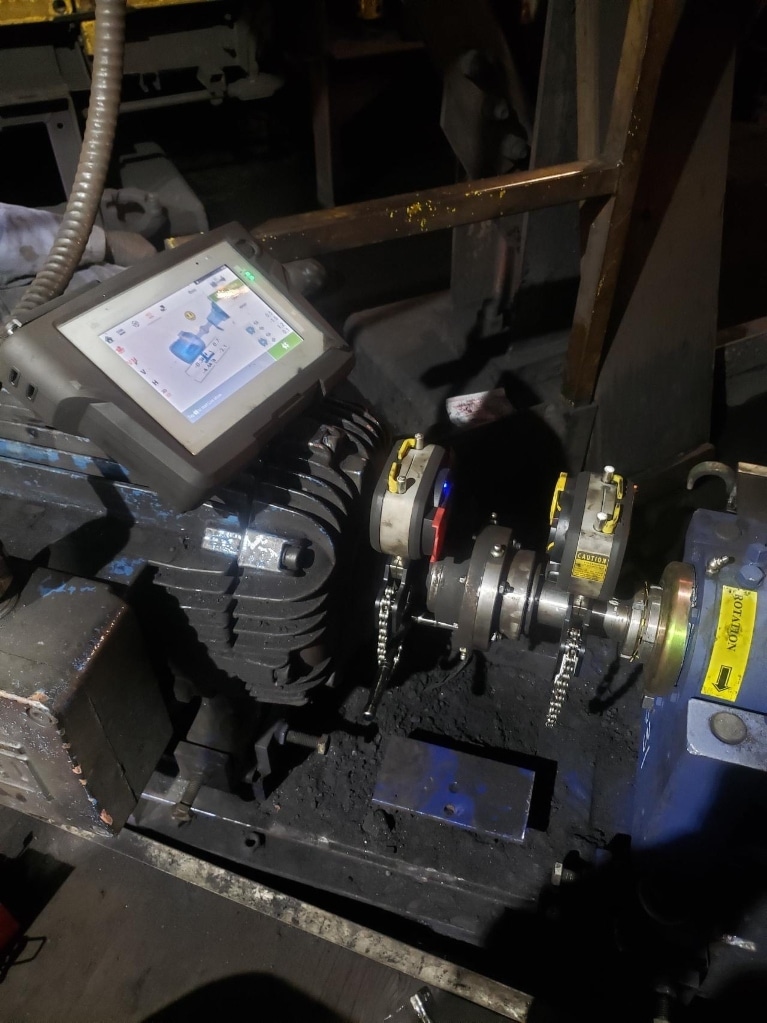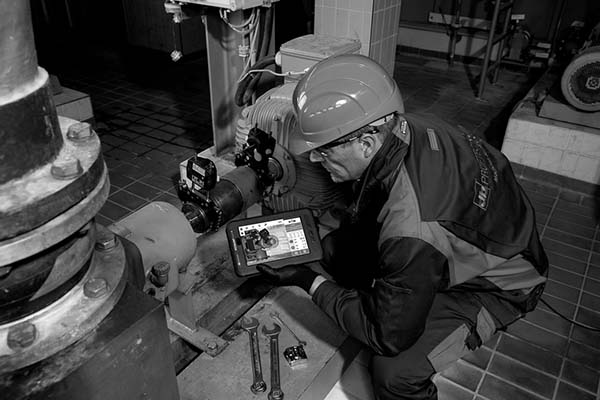Wind turbines operate in some of the harshest conditions on Earth. Keeping them in optimal running condition is a challenge for any team — but drive train alignment presents unique hurdles and is one of the toughest parts of maintaining a wind turbine. Choosing the right tools and the right maintenance methodology is so important for keeping turbines up and running.
In this article, we’ll discuss the complex challenges of drive train alignment and the best ways to keep turbines correctly aligned. We’ll also explain how using the right tools can dramatically speed up the process of alignment.
What Is Drive Train Alignment for Wind Turbines?
The majority of wind turbines today use a drive train to convert rotational energy into electrical energy. The drive train is one of the most critical elements of the wind turbine. Precise alignment, down to the thousandth of an inch, is essential to keeping energy flowing through the turbine.
The drive train consists of a gearbox and a generator, which are connected to the turbine rotors using both a low-speed and a high-speed shaft. As the rotors slowly turn in the wind, the gearbox converts that rotational energy into high speed that the generator can use to produce electricity.
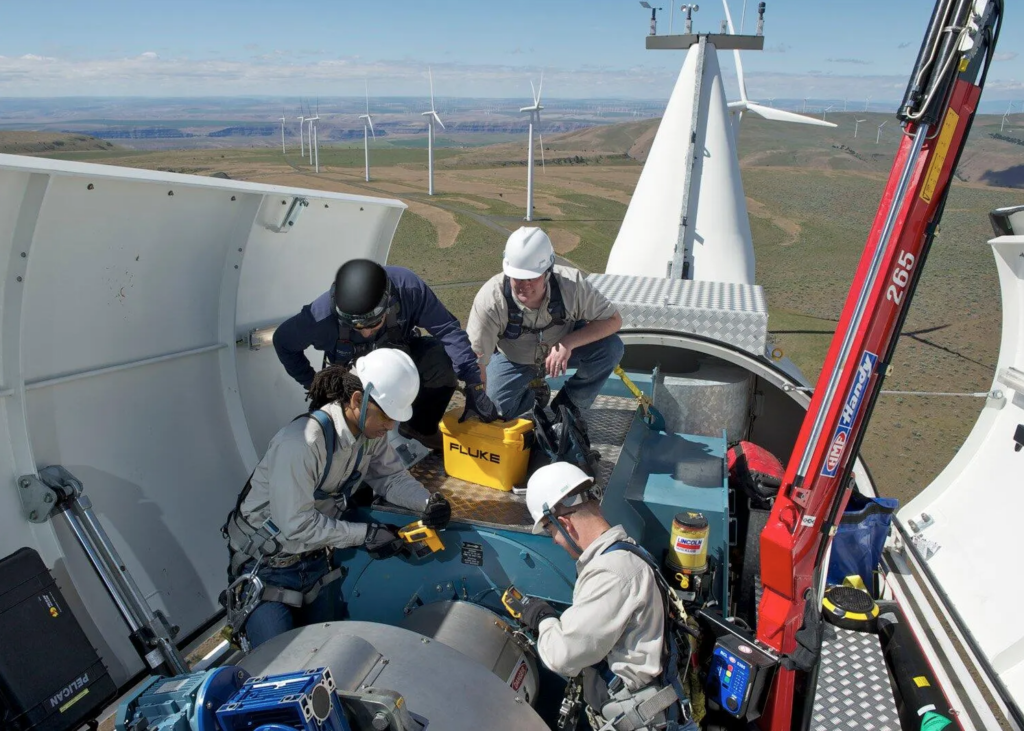
Over time, misalignment will damage gears and bearings, reduce efficiency, and drive up maintenance costs. Fortunately, precision laser tools like the RotAlign Touch can quickly fix alignment issues and extend turbine lifespan.
What Happens When the Machine Train Is Misaligned?
Drive train (or machine train) misalignment does not only cause excessive vibration levels, but also increases loads and forces on the rotational parts e.g. the bearings etc. Over time, this damage can cause the turbine to break down. Even if the turbine doesn’t immediately fail, high levels of vibration and increased levels of loads and forces shorten its service life.
Misalignment in the drive train also reduces power generation. As the gearbox and generator must be precisely aligned in order to successfully convert rotational energy (from the wind driving the rotor blades) into electrical power, when it is not, there’s a reduction in energy conversion ie. less power is transferred through the shaft to be converted into electricity.
It is therefore best practice to perform alignment during installation and then at least once a year after that. Realigning the drive train whenever you replace the gearbox or generator is also required. That’s why having the right tools is critical—not only to meet these best practices but to make alignment faster, easier, and more precise every time.
Challenges in Wind Turbine Machine Train Alignment
Wind turbines operate in some of the wildest places on Earth – harsh, remote locations like the Mojave Desert and the Atlantic Outer Continental Shelf. They face extreme temperatures, storms, and high waves in addition to intense winds. All these environmental factors take a toll and result in misalignment of the machine train. Here are four challenges that specifically affect turbines over time:
1. Aerodynamic Loads
High winds produce load instability and high vibration levels throughout the wind turbine, making it difficult to get an accurate alignment reading. It’s best practice to use a laser alignment tool – like the RotAlign Touch – that can automatically compensate for high vibration levels, so that service crews can get precise measurements as quickly as possible.
Aerodynamic loads can also lead to unexpected bends and movements in the turbine shaft, which impact alignment precision. High vibration levels can also over time misalign the machine train.
2. Swaying Movements
Wind turbines are constantly subject to strong winds. At extreme wind speeds, the turbine tower begins to sway, leading to rocking and movement in the nacelle, or protective case that houses the machine train.
This movement causes misalignment over time. It also makes it difficult to obtain precise alignment measurements. Fortunately, state-of-the-art alignment systems like the RotAlign Touch have built-in software to compensate for dynamic movement.
3. Installation State Changes
Misalignment can occur during the installation process itself. Failure to qualify alignment with the rotor in place can also lead to early-onset problems.
In some cases, technicians check alignment with the nacelle on the ground, instead of mounted on the turbine base, which can create alignment issues as well. It is good practice to recheck alignment a few months after installation in case of installation state changes.
4. Other Alignment Challenges
Typically located in remote areas, wind turbines can be difficult to reach and challenging to fix. After traveling to the wind farm, technicians need to climb a few hundred feet to reach the nacelle, carrying their tools and equipment. They must also perform their work in confined spaces.
As can be seen in this U.S. Department of Energy job posting, technicians need a high level of skill, physical strength, and problem-solving ability to successfully align the machine train in a wind turbine. Beyond that, they need access to high-quality tools that can help them perform their work quickly, safely, and with the right level of precision.
Solving Alignment Issues with RotAlign
Prüftechnik’s single-laser alignment tools allow technicians to carry out precision shaft alignment quickly and safely. Single laser technology also means that no pre-alignment process is necessary.
Building on this, the RotAlign Touch system adds Adaptive Alignment capabilities like Live Move and Live Trend, which automatically compensate for environmental factors and guide technicians through the process—making alignment even more efficient and accessible, regardless of experience level.
The system can operate completely contact-free, with no need for manual shaft rotation via SWEEP mode. With a locking pin and service brake in place, technicians can mount the laser and sensor to the shafts using brackets. Then they can release the brake and pin and step out of the way. As the wind rotates the rotor blades, the RotAlign Touch will automatically measure and store alignment results.
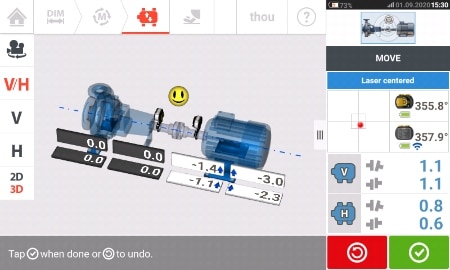
- Live Move: This function measures alignment in the horizontal and vertical planes simultaneously. This feature is ideal for any situation when workers have restricted space and cannot rotate shafts into certain positions and it’s a great way to save time during wind turbine alignment. Live Move allows adjustments from any position on the shaft, eliminating the need to manually rotate it to a specific starting point.
- Live Trend: The RotAlign Touch’s Live Trend function allows technicians to track real-time dynamic changes to machine train alignment during the turbine’s regular operation. The function lets teams identify alignment issues caused by factors like aerodynamic load, dynamic machine change and thermal growth, so they can make adjustments in advance.
Using Live Trend is quick and straightforward. - First mount the sensors onto the gearbox and generator machine cases.
- With the Live Trend function on, let the nacelle rotate 360 degrees as it would during normal rotation.
- The tool will measure positional changes in the drive train components during the nacelle’s rotation.
- With information on these changes, teams can make necessary adjustments during the alignment commissioning stage, instead of being surprised by alignment issues down the road.
Strong Alignment, Stronger Turbines
The machine train, or drive train, on a wind turbine is a delicately balanced piece of equipment. Even the smallest misalignment, just thousandths of an inch, can interfere with normal operations and cause significant damage. Misalignment in the machine train can also interfere with power generation.
The true challenge? Technicians are under a lot of pressure when aligning wind turbines. Typically they have traveled from far away and need to make the most of their limited time on-site. Conditions are harsh and spaces are confined.
That’s why it’s so important to use the right tools. A state-of-the-art single laser alignment system like the RotAlign Touch helps any technician get the job done quickly, accurately, and precisely, so that turbines last longer and require less maintenance.

